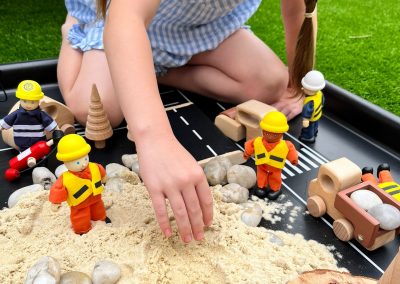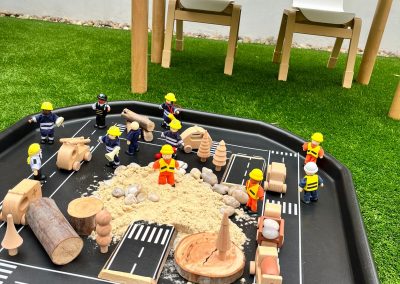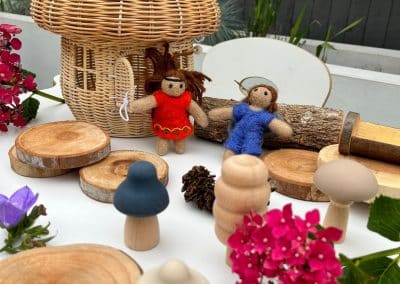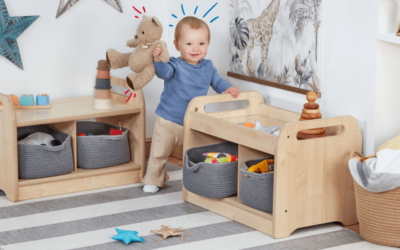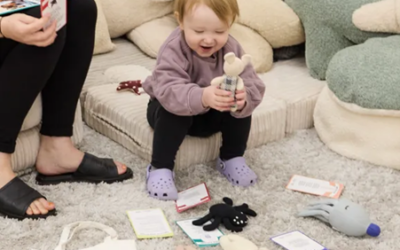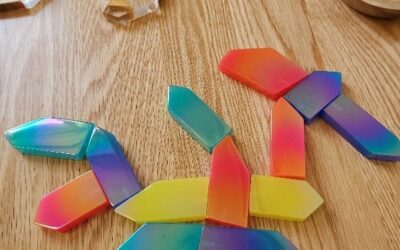Small World Play in Early Years
Small World Play is imaginative play at its best. Children learn so much through Small World Play. So, what exactly is it?
In Small World Play children use their creative skills to act out real life scenes, recreate fantasy or fairy tales from stories, or simply make it up as they go along from their imagination.
Understanding the world
Small World Play can be great to introduce children to cultural experiences and diversity that they may not experience in their own homes, or to make children of different cultures feel valued and included.
Providing props and items from different cultures, such as different buildings from around the world or figures that represent people from all around the world, is a great way of doing this. As such a versatile activity, you can really set up Small World Play anywhere. Indoors or outdoors are both perfect. You can provide the resources all set up and the children can move and change them how they like.
Animal figures are fantastic for talking about different countries and climates, while fantasy figures such as fairies and unicorns or aliens are great for encouraging children to use their imagination to dream up new worlds.
They have no limits on what they can come up with so the more props you provide the better. Natural resources or items that can be found around the house are great additions to your props, for example a leaf could be used as a bed for a fairy.
It really allows children to escape and create in a magically calm way.
Benefits of small world play
Personal, social and emotional development
Small World Play provides an excellent opportunity for children to act out and explore emotions, reflecting on their experiences. Playing in a group allows them to develop skills in sharing and compromise, and develop confidence in social situations, while playing independently really enables them to get lost in their imagination.
Communication and Language
Small World Play is a fantastic way to develop language skills, whilst chatting with other children and learning new vocabulary. You can help here by introducing new descriptive words, for example “this car is driving very fast over this bumpy road”
Physical Development
There are so many brilliant opportunities in Small World Play for children to practice hand eye coordination and develop their fine motor skills. For example, picking up small props, fitting things into one another, opening and closing doors on little houses, and pouring sensory items such as sand or water.
Some of my favourite resources to provide for small world play are:
- Animals and Environments
- Fantasy worlds – fairies and aliens
- People within the community – police, fire, and rescue help
- Vehicles – cars, trucks, boats, and planes
- Natural items – wood, flowers, stones, and shells
This blog was kindly written by our brand ambassador and Early Years educator Gillian. Find her on Instagram @my_three_little_strawberries
Related blogs
Your Guide to the School-Based Nursery Capital Grant
What is the School-Based Nursery Capital Grant? For schools aiming to enhance their nursery facilities, the School-Based Nursery Capital Grant provides a simple funding solution. This grant is open to eligible state-funded primary schools in England that...
Top Tips for Play with Rhyme Time
Author: Alice Sharp Alice is nationally and internationally recognised as using a dynamic and innovative approach to children. She uses an experiential approach in her role as early childhood influencer, keynote speaker, mum and writer. She is waiting to uplift...
Top Tips for Play with Gems, Jewels and Sparkles!
Author: Alice Sharp Alice is nationally and internationally recognised as using a dynamic and innovative approach to children. She uses an experiential approach in her role as early childhood influencer, keynote speaker, mum and writer. She is waiting to uplift...
